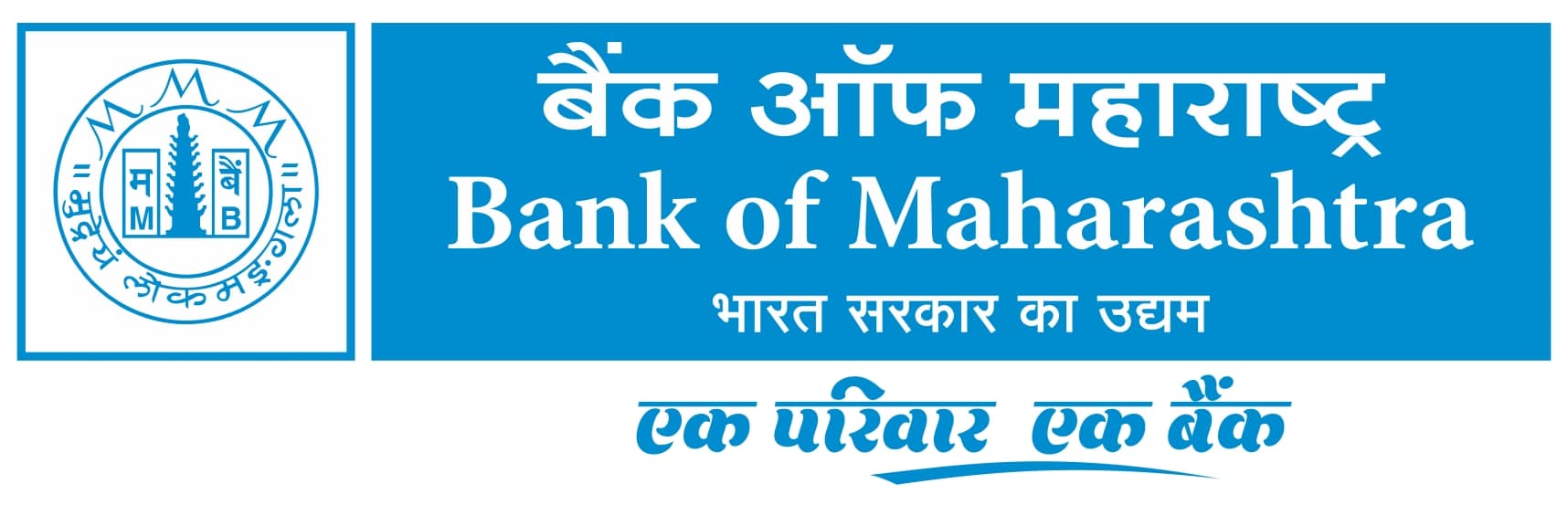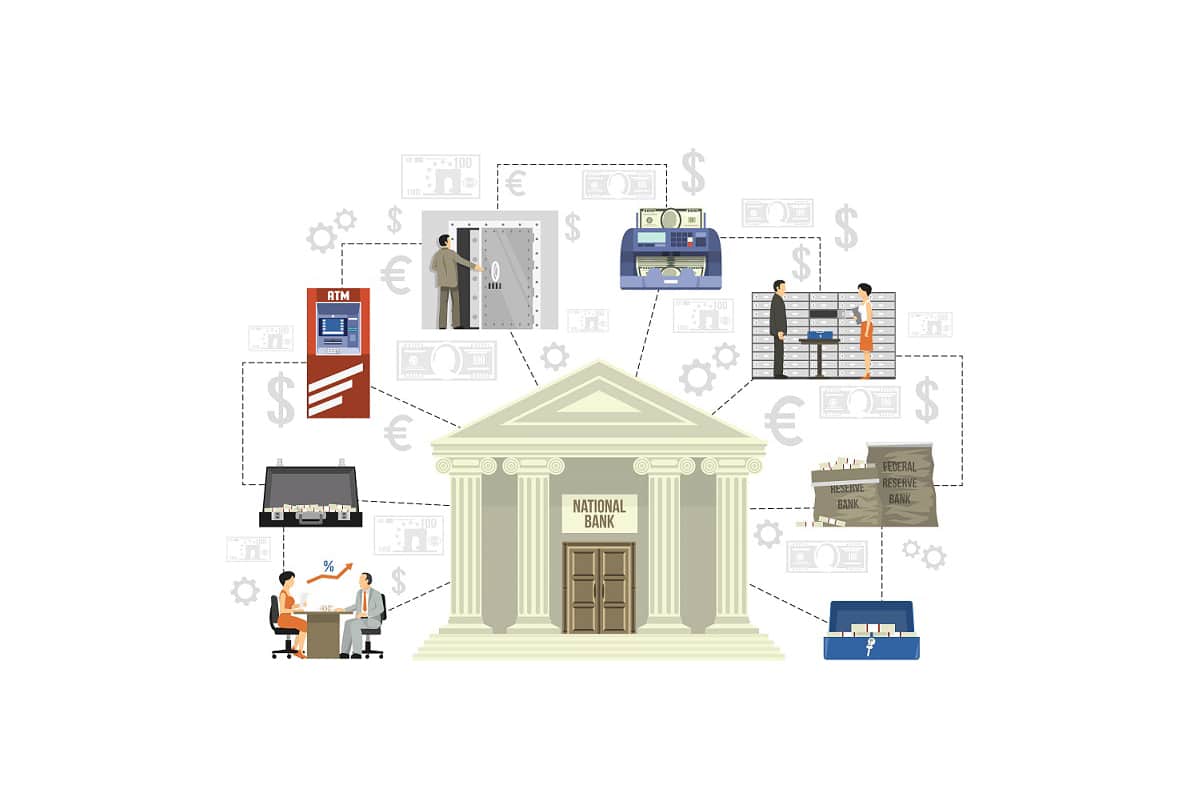The bank is a financial institute that is authorized to receive money and offer loans to its customers. The banking system in India sprang back in the British period. Initially, the bank offered just the basic services, but now you can avail numerous other services such as:
- Wealth management
- Currency exchange
- Savings account
- Financial services
- Safeguarding money
- Investing the deposits in funds
It was on July 19, 1969, when Bank Nationalized Day came into existence. It was the day when the government of India nationalized 14 banks. Mostly all the nationalized banks in India are called public sector banks.
Nationalization is the process in which government takes over the private assets and gets them under public ownership. Till 2017 there were 27 public sector banks in India, but after the amalgamation of the banks as per the announcement of the Finance Minister of India Nirmala Sitharaman, there are only 19 nationalized banks.
List of Nationalized Banks in India
Today we are going to discuss the list of Nationalized Banks (Government Banks) in India.
Types of Banks in India
Here is the classification of types of banks in India-
1. Commercial Banks:
These banks are further categorized into four categories:
- Private Sector Banks
- Public Sector Banks (or Nationalized Banks)
- Regional rural banks
- Foreign banks
2. Small Finance Banks
3. Payments Banks
4. Co-operative Banks
What is a Nationalized Bank?
They are the public sector assets that are owned or managed by the state or central government. Nationalized banks came into occurrence when previously the banks that came under private sector banks were shifted to the public sector by the act of nationalization.
Post-independence, the government of India took numerous steps to improve the country’s economic development, and one of the major steps they took was establishing RBI in April 1935. Later in 1948, under the terms of the RBI Act, they gave notice to nationalized the banks and then in 1949.
It took a lot of years, and then in 1969, after the ordinance of then Prime Minister Indira Gandhi, 14 largest commercial banks in India were formed under the regulatory authority of RBI.
These banks had more than 85% share of the total bank deposits in the country, and then in 1980, 6 more banks were commercialized. This means that there are, in total, 19 banks that are to be included in the list of nationalized banks in India. Today, nationalized banks have more than 50% stake in the entire banking sector.
List of Nationalized Banks in India
Here is a table containing all the Nationalized Banks In India:
| Nationalized Banks | Headquarter | Tag Line |
| 1. Punjab National Bank ( With the merger of Oriental Bank Of Commerce and United Bank Of India) | New Delhi | The name you can Bank Upon |
| 2. Indian Bank( With Merger of Allahabad Bank) | Chennai | Your Tech-friendly bank |
| 3. State Bank of India | Mumbai | With you all the way, Pure Banking Nothing Else, The Nation’s banks on us |
| 4. Canara Bank( With Merger Of Syndicate Bank) | Bangalore | Together we can |
| 5. Union Bank of India( With Merger Of Andhra Bank and Corporation Bank) | Mumbai | Good people to bank with |
| 6. Indian Overseas bank | Chennai | Good people to grow with |
| 7. UCO Bank | Kolkata | Honors Your Trust |
| 8. Bank of Maharashtra | Pune | One Family One Bank |
| 9. Punjab and Sind Bank | Rajendra Place, New Delhi | Where Service Is A Way Of Life |
| 10. Bank of India | Mumbai | Relationships beyond Banking |
| 11. Central Bank of India | Mumbai | Central To you Since 1911, Build A Better Life Around Us |
| 12. Bank of Baroda | Gujarat | India’s International Bank |
Here is the list of all the government banks in India and some important information about them-
1. Punjab National Bank

It is the preeminent Swadeshi bank that was instituted on April 12, 1895, in Lahore. PNB was nationalized in 1969 and is headquartered in Delhi. It is a state-owned corporation bank that started its operations with Rs 2 lac and working capital of Rs.20,000.
They render several financial services such as savings and current accounts, all types of loans, debit and credit cards, Investment, trading, and much more. They have a customer base of 180 million customers, 10910 branches, and more than 13000 ATMs across the nation.
2. Indian Bank

This bank was incorporated on August 15, 1907, and today it is serving customers as a government bank in India. It is headquartered in Chennai, and its current CEO is Padmaja Chunduru. Indian bank has two subsidiary companies that are IndBank Housing Ltd and IndBank Merchant Banking Services Ltd.
They are serving more than 100 million customers and have 20924 employees. Indian bank has more than 6000 branches and 5428 ATMs spread across the country. They offer various banking services to their customers such as debit and credit cards, net banking, loans, deposit accounts, Investment, and more.
Also Read: List of Private Banks in India
3. State Bank of India

This bank is usually called SBI, and it was known as the Imperial Bank of India. Later it was renamed and nationalized on July 1, 1955, and the name changed to State Bank of India. This is the largest public-sector bank in India, with a total of 1/4th share in the total deposits and loans markets.
This bank was made after the merger of two banks that is Bank of Calcutta and the Bank of Bombay. They have a history of 200 years with 209567 employees. SBI has 22141 branches and 58555 ATMs nationwide.
4. Bank of Baroda

It is an Indian state-owned International banking and money services bank. They are headquartered in Vadodara, Gujarat. This bank was founded during pre-independence days in 1908. Later it was nationalized in 1969 by the government of India. They are the second biggest Indian bank based on total assets.
The major services they offer are personal banking, business banking, online banking, corporate banking, all type of loans and investment services, and more. Bank of Baroda serves more than 132 million customers and has 8230 total branches and 13400 ATMs spread across the country.
5. Bank of India

It was established on September 7, 1906, by a group of businessmen in Mumbai. It was nationalized in 1969 with other 13 banks. They have more than 5100 branches and around 3418 ATMs spread across the breadth and length of India. They are headquartered in Mumbai.
Bank of India started with a paid-up capital of Rs 5 million, and today it has become one of the reputed nationalized banks in India. Some of the influential services that they give are a deposit account, different loans, Investments, debit and credit cards, mobile and internet banking, and more.
Also Read: List of Banks in India
6. Canara Bank

This bank was established in 1906 by Ammembal Subba Rao Pai. Initially, it was called Canara Hindu Permanent Fund, and then later, in 1910, it was renamed Canara Bank Limited. It has recently merged with Syndicate bank that has made its assets and revenue higher. They are headquartered in Bangalore, Karnataka.
It has a total of 10403 bank branches and 13406 ATMs across the nation. Canara Bank gives employment to more than 90000 people in the country. The major services which they offer are personal banking, credit and debit cards, corporate and NRI banking, bank deposits, loans, Investment, and more.
7. Central Bank of India

It was incorporated in 1911 by Sir Sorabji Pochkhanawala. This bank was one financial organization of India that was closely monitored and controlled by Indians. In 1918, the Central bank of India opened its branch in Hyderabad, and later in 1969, it was nationalized with the other banks, and at that time, it already had 195 branches.
To date, it has 4715 bank branches and 5319 ATMs nationwide. The Central Bank of India played a major role in building the first Indian exchange bank announced as the Central Exchange Bank of India in around 1936 in London.
8. Bank of Maharashtra

This bank was founded on September 16, 1935, in Pune by G. Kale and D.K. Sathe. They have the largest network of branches in Maharashtra and have more than 15 million customers globally. As of December 2020, they had a total business of Rs. 2,66,000 Lakh Crore.
In total, there are 1900 bank branches, and they provide employment to more than 13000 people in the country. Some of the important services they provide are savings account, savings deposits, term deposits, current account, cards ( debit and credit), internet and mobile banking, loans (education, corporate, vehicle, home, agriculture, etc.), online trading, more.
9. Indian Overseas bank

This bank was incorporated on February 10, 1937, by Thiru M. Chidambaram Chettiar. The major objective behind setting up this bank was to promote foreign exchange operations and increase foreign banking transactions. They have more than 3700 bank branches and 728 ATMs spread across the country.
They are headquartered in Chennai. They not only have bank branches in India but have a few branches overseas as well in Seoul, Colombo, Bangkok, and Singapore. Indian Overseas Bank has representative offices in Dubai, Guangzhou, and Vietnam. They grant various bank services such as deposit accounts, general banking, and financial services such as deposit schemes, remittances, trade finance, different loans, etc.
Also Read: List of Scheduled Banks in India
10. Punjab & Sind Bank

It was founded by Bhai Vir Singh, Sir Sunder Singh Majitha, and Sardar Tarlochan Singh on June 24, 1908. The main motive behind opening this bank was to uplift the poor land culminated in. They wanted to support the weaker section of society to help increase their standard of living.
They have a total of 1554 branches in India and 623 bank branches that are located in Punjab itself. They are headquartered in Delhi and were nationalized in 1980. The major services that they offer are deposits, personal banking, retail banking, investments, corporate banking, internet banking, mobile banking, and more.
11. UCO Bank

This bank was incorporated in 1943 by Ghanshyam Das Birla. Initially, it was called United Commercial Bank, but its name changed to UCO Bank a couple of years back. They are headquartered in BTM Sarani, Kolkata. They have over 4000 service units and 49 zonal offices all over India. UCO Bank also operates in Singapore and Hong Kong.
In total, they have 2100 ATMs and have more than 22000 employees working for them. Some of the major financial services they offer are consumer banking, corporate banking, finance, insurance, investment banking, mortgage loans, private banking, wealth management, etc.
12. Union Bank of India

It was established in 1907 and was nationalized in 1969 with the other banks. It was inaugurated by Mahatma Gandhi and had more than 60% government cut in it. When India got freedom from Britishers at that time, this bank had four branches, three in Mumbai and one in Saurashtra.
It has more than 4000 bank branches and 4411 ATMs spread across the country. Recently in 2021, it merged with Andhra Bank and Corporation Bank, which has increased its assets and profit as well. The major services they provide are corporate banking, finance and insurance, investment banking, mortgage loans, private banking, wealth management, and more.
Also Read: Merchant Banking in India
This was the complete list of government banks in India that are also the nationalized banks.
Along with the information of national banks, it is essential for us to know about the recent banks that merged with them-
| Sl. No | Acquirer Banks | Banks to be Merged |
| 1. | Punjab National Bank(PNB) | Oriental Bank of Commerce and United Bank of India |
| 2. | Indian Bank | Allahabad Bank |
| 3. | Canara Bank | Syndicate Bank |
| 4. | State Bank of India | Bhartiya Mahila Bank, SB of Bikaner and Jaipur, SB of Patiala, SB of Travancore |
| 5. | Union Bank of India | Andhra Bank and Corporation Bank |
| 6. | IndusInd Bank |
Bharat Financial (SKS Microfinance) |
| 7. | Bank of Baroda | Vijaya Bank and Dena Bank |
Big Bank Mergers
The government of India announced the mergers on August 30, 2019. The major purpose of mergers was to strengthen the banking sector and increase the wealth of shareholders. These banks were merged because they were using a similar CBS platform that would benefit from the fast realization of gains.
The Finance Minister said that they wish to create next-generation banks, and for that, it is essential that you would need banks that have a strong national presence and global reach. The good part of the merger was that the employees were not taken out; instead, they were adjusted in different banks.
Although, there were a total of 27 banks that have merged recently, and the number has reduced to 12. Let us know about some of the mergers in detail:
1. Punjab National Bank, Oriental Bank of Commerce, and United Bank
This amalgamation happened in August 2019. PNB is the main bank in them, and it made it the second-largest public sector bank with a market of Rs 17.95 lakh crore. This amount is 1.5 times more than PNB prior to the merger. Now, they have a total of 11 437 bank branches.
The total employee strength at the time of the merger of each bank was-
PNB- 65, 116
OBC- 21, 729
United Bank- 13, 804.
2. Canara Bank and Syndicate Bank
The second big merger was of Canara Bank and Syndicate Bank. Both the banks are from South India, and amongst them, Canara bank became the chief bank which made it the fourth-largest public sector bank. Its business increased tremendously after the merger and reached Rs. 15.20 Lakh crore.
Together they have 10 391 bank branches, 12829 ATMs, and a combined strength of 91 685 employees. This merger was done to improve the reach of banking services to the larger public.
3. Union Bank of India, Andhra Bank, and Corporation Bank
Union Bank became the anchor bank among the other two public sector banks. This alliance was announced in 2019, and it made Union Bank of India the fifth largest public sector bank after the consolidation with Andhra Bank and Corporation Bank.
It has increased the business size of Union Bank of India to 14.59 Lakh and a total of 9609 bank branches.
4. Indian bank and Allahabad Bank
Indian Bank became the main bank, and Allahabad Bank was absorbed in it. This amalgamation made Indian Bank the seventh-largest Public Sector bank as its business size increased to 8.08 lakh crores. The major benefit of this merger is that now they have a nationwide presence and branches, which has increased its network tremendously.
Frequently Asked Question
Q1) How many National Banks are there in India?
There are a total of 12 National Banks in India. Earlier, the list was comparatively bigger, but after the mergers and acquisitions, the current list as of 2021 is 12.
Q2) How many banks have been amalgamated in India?
A total of 10 banks have been amalgamated into 4.
Q3) What are the names of all the national banks?
They are 12 in number, and their names are Punjab National Bank, Bank of Baroda, Bank of India, Central Bank of India, Canara Bank, Union Bank of India, Indian Overseas Bank, Punjab, and Sind Bank, Indian Bank, UCO Bank, and Bank of Maharashtra, State Bank Of India.
Also Read: 20 Best Banks for Business Loan in India
This was the list of nationalized banks in India and their recent merger with other public sector banks. One important thing to note is that almost all the nationalized banks are public sector banks in which the major stake is government. This list would help you choose the bank as per your requirement plus give you information on their establishment and history.




